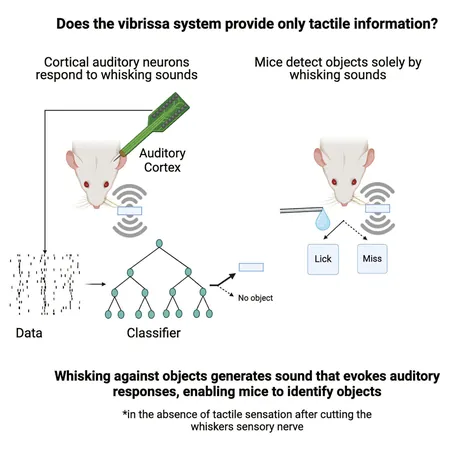
Unveiling the Cosmos: Euclid’s Astonishing Discovery of 380,000 Galaxies!
2025-04-24
Author: Mei
A Cosmic Goldmine Unleashed
Last month, the European Space Agency (ESA) unveiled a monumental dataset from its groundbreaking telescope, Euclid. This release is a breathtaking showcase of 380,000 galaxies, complete with stunning examples of light bending and magnification due to gravitational influences of massive galaxies.
Mapping the Sky: A Deep Dive
Captured across the constellations of Fornax, Draco, and Horologium, these deep-field mosaics span approximately 63 square degrees—over 300 times the size of a full moon! The Euclid mission aims to map a staggering one-third of the sky by 2030, ultimately gathering data from 14,000 square degrees. In the coming years, expect Euclid to revisit these fields up to 52 times for even richer data.
Peering Into Cosmic Evolution
Launched in 2023, the Euclid mission’s primary objective is to chart galaxies across cosmic time, allowing scientists to explore the universe's evolution and the nature of its colossal structures. With this wealth of data, researchers hope to unravel mysteries surrounding gravity, dark matter, and dark energy.
An Incredible Snapshot of Galaxies
The recent data release, affectionately termed a ‘quick data release,’ offers an astounding view into the immense capabilities of the Euclid telescope. Among the remarkable findings are 380,000 galaxies, a mere sample of what is to come. To handle the massive classification task, the Euclid team enlisted advanced AI technologies and engaged citizen scientists from the Galaxy Zoo platform, empowering them to categorize galaxies based on unique features like spiral arms and bars.
The Enigmatic Gravitational Lens
Among the most captivating discoveries are instances of strong gravitational lensing—where the gravity of a foreground object distorts and amplifies the light from a behind one, creating mesmerizing arcs or rings known as Einstein rings. The team identified approximately 500 of these extraordinary phenomena, showcasing the telescope’s prowess.
Exciting Finds Beyond Galaxies
This dataset also reveals a treasure of lowly faint dwarf galaxies and massive red galaxies hailing from the early universe. These so-called ‘little red dots’ have intrigued cosmologists since their initial detection by NASA’s James Webb Space Telescope in 2022, as they appear far too large to have formed so early in cosmic history. Some speculate that the glowing halo is merely material swirling around the central black holes.
The Future of Cosmic Discovery
Excitement is bubbling within the scientific community as teams work diligently on several papers based on Euclid's first findings. Stay tuned for the first full data release scheduled for October 2026, where even more astonishing discoveries await!


 Brasil (PT)
Brasil (PT)
 Canada (EN)
Canada (EN)
 Chile (ES)
Chile (ES)
 Česko (CS)
Česko (CS)
 대한민국 (KO)
대한민국 (KO)
 España (ES)
España (ES)
 France (FR)
France (FR)
 Hong Kong (EN)
Hong Kong (EN)
 Italia (IT)
Italia (IT)
 日本 (JA)
日本 (JA)
 Magyarország (HU)
Magyarország (HU)
 Norge (NO)
Norge (NO)
 Polska (PL)
Polska (PL)
 Schweiz (DE)
Schweiz (DE)
 Singapore (EN)
Singapore (EN)
 Sverige (SV)
Sverige (SV)
 Suomi (FI)
Suomi (FI)
 Türkiye (TR)
Türkiye (TR)
 الإمارات العربية المتحدة (AR)
الإمارات العربية المتحدة (AR)